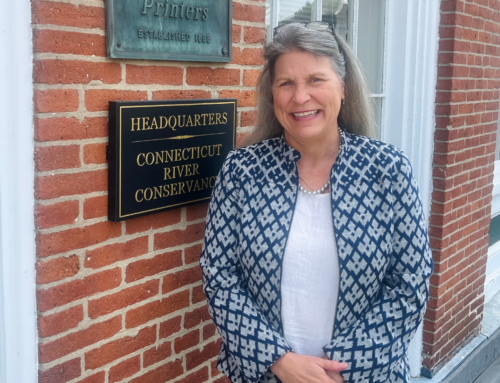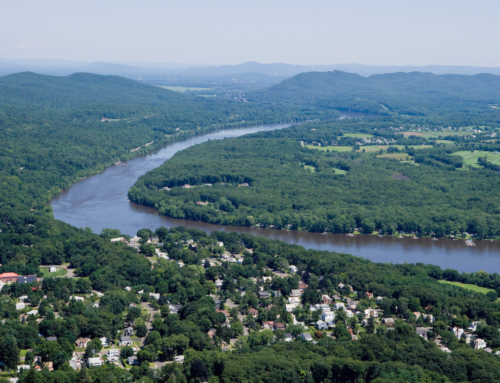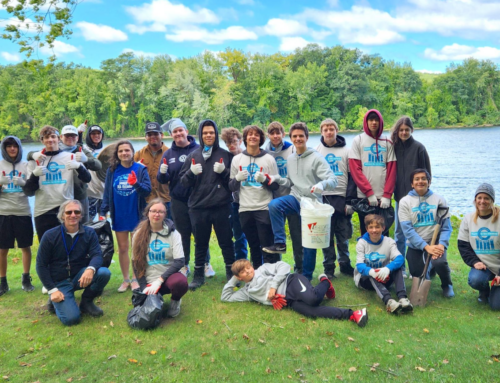FOR IMMEDIATE RELEASE
By David Deen
Vermont, February 01, 2012. The recent Vermont Yankee court decision said the State of Vermont can’t trump the federal government when it comes to issues of nuclear safety. But the same ruling affirmed Vermont’s continuing authority for oversight of other Yankee issues, like enforcement of the Clean Water Act.
That’s good, because when your next-door neighbor is a nuclear power plant, their bad housekeeping is more than just a nuisance. Vermont Yankee refuses to adequately use its cooling towers, and instead discharges hot water – thermal pollution – directly into the Connecticut River. It cuts electricity production costs, but as Vermont Yankee is an independent energy producer, any savings do not automatically reduce anybody’s electric bill, allowing Vermont Yankee to pocket the savings. So Louisiana-based Entergy profits at the expense of the river, a shared public resource that millions of us cherish as the heart of New England.
But the State of Vermont can make sure they use their cooling towers to protect your river, and the Connecticut River Watershed Council is working toward that goal. By joining the CRC’s good neighbor campaign at www.coolitentergy.org you can let Entergy know that the whole neighborhood is watching.
Entergy has known since 1978 from its own reports that their discharge heats up the river all the way to Holyoke, Massachusetts. Thermal pollution can be just as insidious as other kinds of pollution, and although it’s invisible, it can harm river life. Heating up the river negatively affects wildlife and their habitats. It confuses and disrupts fish, which look to changes in water temperatures to migrate or breed.
For more than 15 years, Vermont Yankee has been permitted to raise the temperature of the entire Connecticut River up to 13 degrees during winter months and up to five degrees in the summer and fall. The nuclear power plant can send up to 543 million gallons of heated water – some of it at 105 degrees – into the river every day. As if this weren’t bad enough, in 2006 Vermont’s Agency of Natural Resources (ANR) allowed the nuclear power plant to increase river temperatures even more.
Since Vermont Yankee has been allowed to do all this under an expired water quality permit, CRC has petitioned ANR to begin the permit renewal process – stalled since 2006. Now that the court has ruled that Vermont Yankee won’t be shut down this March, it’s time for the State to issue a new permit with tougher temperature standards for Yankee’s discharges into the Connecticut.
CRC believes there is good science to back up those tougher standards – better science than the narrow, slanted view Entergy’s consultants provided the State of Vermont to justify heating up the river eight years ago. A soon-to-be-released CRC-funded expert analysis of Entergy’s case to continue dumping thermal pollution came to some clear conclusions:
- Vermont Yankee did not accurately describe the size and extent of its plume of thermal pollution.
- Vermont Yankee did not provide enough information to prove they weren’t threatening our fish, including Atlantic salmon and shad.
It’s simple: when a power plant like Vermont Yankee wants to dump thermal pollution into our river they need to prove that it will not harm the aquatic organisms that live in it. The Environmental Protection Agency has guidelines for how that should be done. In particular, EPA identifies five things that should be included in order to support a determination of whether or not fish communities will be harmed from a thermal discharge. Our experts found that none of the five were appropriately provided in Entergy’s presentation to ANR.
Describing how a power plant’s pollution affects a river and its fish and other inhabitants can be complicated. But on some levels, the scope of Entergy’s 2004 study doesn’t meet common sense. After their own 1978 study revealed their 55-mile-long thermal plume in the Connecticut River, in their latest study they decided the plume was only half of a mile long. They also only used a limited amount of temperature data and compiled it in a way to mask its potential variability.
With so much information available about the whole river and having hired enormous computing horse-power, their entire approach to justify their thermal pollution is like buying a brand new Ferrari to impress your neighbors and only driving it in first gear. With the brakes on. They simply aren’t using the tools they have at their disposal in a way that will enable them—and all of us—to have a clear picture of the impact their pollution has on the Connecticut.
With this new evaluation in hand, we will be ready to provide the Agency of Natural Resources with an independent, citizen-backed case for why Vermont Yankee hasn’t made their case for over 15 years of thermal pollution. But you don’t have to wait for the permit proceedings to join in our effort to improve the neighborhood. Go to www.coolitentergy.org and sign a petition CRC will deliver to Entergy to ask them to be a good neighbor.
Your river is not Entergy’s pollution dump.
# # # #
(David Deen is Upper Valley River Steward for the Connecticut River Watershed Council. Founded in 1952, CRC is the four-state Connecticut River watershed’s foremost citizen advocate for clean water and healthy human and natural communities. ctriver.org)
CONTACT:
David Deen, River Steward (VT) ddeen@ctriver.org 802-869-2792
Andy Fisk, Executive Director afisk@ctriver.org 413-772-2020 x 208 or 413-210-9207 (cell)







